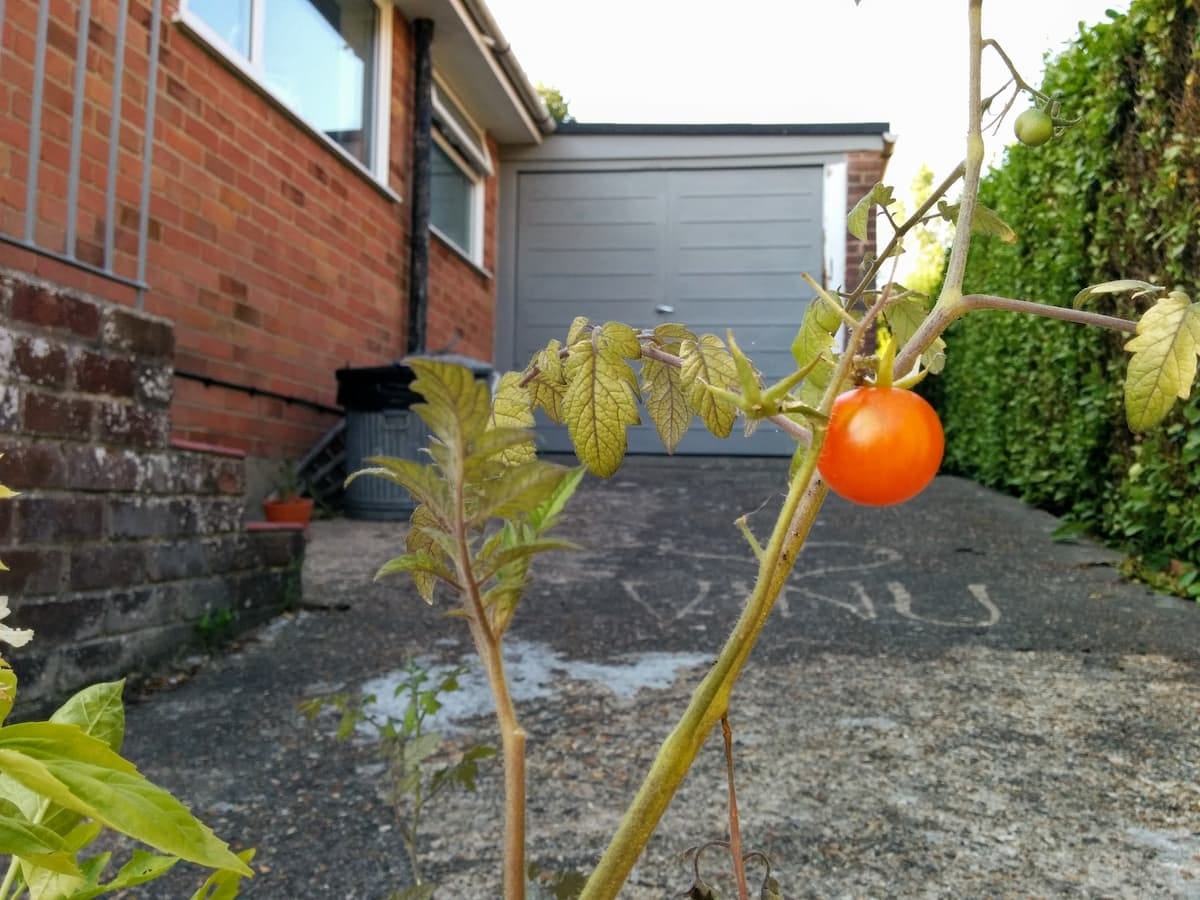When will we face our own sh*t?
I really love tomatoes. I love them in a sandwich, as a sauce or in a curry. I love them sundried, roasted, with a drizzle of olive oil, or just on their own as nature intended. I love them so much that my wife Vineeta sometimes calls me Tomo Tomato, or if we’re really getting into the Mediterranean vibe, Tomo Pomodoro.
It’s therefore one of the greatest joys in life for me that every year we have tomatoes growing in our garden that at the peak of summer (in a good year) can be picked from the vine. One year we counted a thousand cherry tomatoes. Heaven!
What’s even better about these tomatoes is that we didn’t even plant them. I love offering a juicy red cherry tomato to a friend and just as they are popping it in their mouth telling them that “they just grew out of our poo!“
Just over a decade ago we ripped out the 1960’s toilet in our house and replaced it with a Separett Villa 9000, a fantastically ugly composting toilet. It seemed like a high risk strategy, especially as we only had one toilet, but looking back it was one of the best decisions we made. Despite it’s aesthetic inadequacies, which still bother me on a daily basis, it’s advantages have been enormous. Compared to our old toilet we save around 27,000 litres of clean drinking water per year, have a warmer house in winter because we aren’t flushing heat out of our bathroom several times a day, and we now have an abundance of nutritious compost that magically grows tomatoes for us. I’ve estimated that since we installed it, we’ve collected and deposited on our garden around 1.6 tonnes of human manure, also know as “Humanure”.
The genius of the Separett Villa toilet is that it separates the liquids from the solids, hence the name. This separation stops the solids from going putrid and smelly, allowing them to be composted in a regular compost heap, while also providing a supply of potent liquid fertiliser in the form of urine, but lovingly referred to by enthusiasts as “Liquid Gold”.
You might laugh but something strange happens when you live with a composting toilet. Your perspective shifts from seeing your own produce as a disgusting waste stream to a valuable resource. You start to see the end of one meal as the beginnings of a future meal. This happens to such an extent that after a while, it becomes hard to use normal toilets in other places. You start wondering whether you can hold it in until you get home so that you don’t have to throw it away.
There is an inherently intuitive connection to the natural nutrient cycle that forms when you start taking care of your own excreta. You eat, excrete, compost, grow, eat and repeat. It’s a perfect closed loop system that enriches the local environment and your own health. I often say that if you really want to learn about circular economics, start by closing the loop on your own poop.
This isn’t a new idea. For most of human history human excrement was seen as a resource rather than a waste product. During the Korean War in the 1950’s, American soldiers came home telling stories of Korean villagers decorating their outhouses to lure the foreign soldiers to make a deposit. The Koreans understood the true value of human excrement and if passers by would give it to them for free, they weren’t foolish enough to miss the opportunity.
This value was understood across much of Asia. In his book ‘Farmers of Forty Centuries’ published in 1910, Dr Franklin King writes that;
“One of the most remarkable agricultural practices… is the well nigh universal conservation and utilization of all human excrement in China, Korea and Japan, turning it to marvellous account in the maintenance of soil fertility and in the production of food”
Not only was it utilised in agriculture, but it even had financial value. For example, in 1908 the city of Shanghai sold the rights to a private contractor to be able to enter residences and public places early in the morning to remove the human excrement, known as night soil. The contractor paid the Chinese government a sum of gold worth the equivalent of USD$1 million in today’s money for the right to collect other people’s poo.
Skip forward to the present and here in the UK we are spending billions of pounds a year to have our excrement taken away by private sewage companies, while farmers are spending around £1.4 billion a year on artificial fertilisers. In the mad world where GDP is the measure of success, paying twice is a great thing. After all, any money spent, whether on organic fruit or crack cocaine, is great for the economy.
I’m writing this at a time when the UK government is drawing up emergency plans for the re-nationalisation of Thames Water, which is apparently the largest water and sewage company in Europe1. After years of what some would argue is a toxic combination of financial fraud and environmental negligence, it seems that the house of cards is finally toppling and the need for change has finally been recognised. This might therefore be the perfect time to open a discussion around how we redesign our sewage systems for the 21st Century and integrate circular thinking.
Throughout history the question of what to do with human excrement in large population centres has been a challenge. Without an effective system, not only can large concentrations of excrement wreak havoc on natural eco-systems but can spread disease and make life miserable for people who have to live with the foul smells. Our modern sewage systems have mostly done an excellent job of solving this problem, but they turn one of our most valuable resources into an expensive and harmful stream of waste.
The water and sewage industry itself seems to already promote itself as an example of a circular economy in action, and in some ways that is true. The problem is that the first step in the process is to create pollution. To quote DEFRA “Sewage treatment is essentially about removing polluting organic material from waste water“2. What they don’t mention is why the “polluting organic material“, also known as poo, ended up mixed with waste water in the first place. The basic principle of modern sewage systems is to pollute water and then attempt to unpollute it.
It’s this mixing of solids with water and urine that is fundamental to the standard design of modern sewage systems and it’s hugely inefficient. The solids get mixed together with everything else that goes down drains, from cooking oil to bleach, to engine oil, to house paint, to microplastics and to Cillit Bang, creating a toxic sludge soup that releases greenhouse gases as it anaerobically digests and is incredibly difficult to separate back out. Doing so is expensive and requires significant amounts of energy, producing more greenhouse gases. The solid waste that is eventually recovered is contaminated with hazardous substances including heavy metals that are almost impossible to separate out3. Increasingly, these solids are returned back to the land, but in a form that then contaminates the soil, the water table and the foods grown on that land.
As countries around the world increasingly struggle with the costs and practicalities of safe and environmentally responsible treatment of human excrement, I can’t help but wonder if now is the time for innovative businesses to propose new solutions. Humans produce around 438 million tonnes of poo and 4 trillion litres of urine every year. That’s an enormous market opportunity.

Could we use modern design and technology to make composting human excrement safe, affordable and socially acceptable? Composting toilets from companies like Separett and Air Head are a great start and they can be retrofitted into any home that has a garden with a compost heap, but they are ugly, expensive and the user experience struggles to compete with the “flush and forget” appeal of a normal toilet.
Would it be possible to design a toilet that solves these issues and appeals to normal people? Just as Tesla shifted perceptions of electric vehicles from “eco cars for hippies” to “I want one of those“, could the same be possible for composting toilets? Could they actually be more desirable than those water guzzling Victorian models?
What about in places where there isn’t a suitable compost heap in the garden? Could we design systems for urban areas that can operate cleanly inside apartment buildings, hotels, schools and office buildings as an asset rather than a liability?
And how about portaloos? Apparently the portable toilet market is currently around USD$20 billion globally4 and nearly all of them are smelly chemical toilets. Composting portable toilets do already exist at some events like festivals, but they tend to be crude and smelly. Could they be redesigned to offer a pleasant experience and collect valuable fertiliser?
I think there is a huge opportunity for sustainable innovation here that could be as revolutionary as the Victorian sewers were in London 150 years ago, but first we need to accept our own bodies and get over our phobia of our own produce. We need to face our own shit and learn to love it. We need to get comfortable talking about it and embrace our place in nature’s incredible nutrient cycle. If we can do that, not only might we develop some amazing ecological solutions but we might also gain a deeper and more intuitive understanding of what the term Circular Economy truly means.
So next time you reach for that flush handle, just stop for a moment and ponder - is this the best we can do?
I hope you’ve found this post interesting. Please do share it and leave a comment.
If you’re interested in buying a composting toilet for your home then my old article ‘Was it a good idea to buy a composting toilet?’ seems to have been helpful to many, and the brilliantly named WooWoo waterless toilet company are great specialists in the UK.
Also, on the topic of water companies, check out my earlier post, ‘Does privatisation serve people and planet?’





Great article!
By the way, your Separett Villa might not look stylish but it's probably a lot more palatable to the general public than our DIY'd bucket-within-a-box-with-lid : )
I'm off down a right rabbit hole now 😆 a good one mind, this is fascinating to read and as we're about to re-do our bathroom, very timely.